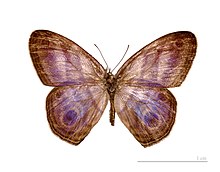메가 소사이어티
Mega Society | |
| 포메이션 | 1982 |
|---|---|
| 유형 | 높은 아이큐 사회 |
공용어 | 영어 |
관리자 | 브라이언 위키셀 |
| 웹사이트 | www |
메가 소사이어티는 그 정도 수준의 차별을 할 수 있다고 주장하는 일반 지능 테스트에서 100만분의 1 수준으로 점수를 받은 사람들에게 열려 있는 높은 아이큐 사회다.[1] 1982년 로널드 K에 의해 설립되었다. 호플린(hoeflin)[2]은 정신계 연구를 용이하게 한다.
1985년 호플린의 메가 테스트가 발표되면서 메가 소사이어티의 대중적 인지도는 높아졌다.[3]
합격기준
백만 점의 희귀한 점수로 수험생을 구별하기 위해 전문적으로 설계되고 검증된 IQ 테스트는 없다. 스탠포드-비넷 IQ 테스트의 표준 점수 범위는 40-160이다.[4] 대부분의 현재 정규화된 다른 IQ 테스트의 표준 점수는 동일한 범위에 포함된다. 160점은 (모든 IQ 테스트에 공통적인 측정 오차 문제는 제쳐두고) 3만 명 중 약 1명의 희귀성에 해당하며, 이는 메가 소사이어티가 100만 명 요구 조건 중 1명에 미치지 못한다.[5] 이 수준 이상의 IQ 점수는 통계적으로 정당화된 순위에 근거할 규범적 사례가 불충분하기 때문에 의심스럽다.[6][7] 높은 IQ 점수는 IQ 점수가 모집단 중위수에 근접하는 것보다 덜 신뢰할 수 있다.[8]
메가 소사이어티는 시험 작성자가 표준 통계적 방법을 사용하여 정상화되었다고 주장하는 미시정, 감독되지 않은 IQ 테스트에 근거하여 회원들을 받아들인다. 이런 시험들이 제대로 검증됐는지 논란이 일고 있다.[9] 메가 테스트는 특히 IQ 테스트의 역사에 관한 2012년 책을 쓴 한 심리학자에 의해 "비표준화된 테스트"로 묘사된다.[10]
기네스북은 한때 가장 엘리트인 초고IQ학회가 99.9999의 백분위수를 가진 메가 소사이어티 또는 100만분의 1의 입학을 요구하는 메가 소사이어티라고 밝힌 바 있다.[11]
출판물
1987년 7월부터 노이스라고 불리는 이 학회의 학술지는 1982년 1월 서클이라고 불렸던 이후 발간되었다. 현재 이 잡지는 불규칙적으로 발행되고 있다.[12]
참조
- ^ Mega Society (August 2005). "Constitution of the Mega Society". Retrieved 2006-07-25.
- ^ Lemley, Brad (March 17, 1985). "The Mind of Genius". The Washington Post Magazine. pp. 14, 23.
vos Savant, Marilyn Mach (1985). Omni I.Q. Quiz Contest. McGraw-Hill. pp. 31–36. ISBN 0-07-039377-X.
Aviv, Rachel (August 2, 2006). "The Intelligencer". The Village Voice. Retrieved 2006-09-23.
Fella, Answer (March 1, 2006). "World's Smartest Fella". Esquire. Retrieved 2006-10-29.
Cox, Jack (June 21, 2005). "Smarter than 99.9% of the rest of us". The Denver Post. Retrieved 2006-10-29.
Derfner, Larry (August 8, 2003). "It smarts!". The Jerusalem Post. Retrieved 2006-10-29. - ^ Morris, Scot (April 1985). "World's Most Difficult IQ Test". Omni. pp. 128–132.
Graham, Ellen (April 9, 1992). "For Minds of Mega, the Mensa Test, is a Real No-Brainer". The Wall Street Journal subs. req. p. A1. Retrieved 2006-07-26. (또한 [1]에 보관)
Berliner, Uri (December 28, 1992). "Mega smart is very, VERY smart, indeed". The San Diego Union-Tribune subs. req. p. C1.
Simonton, Dean Keith (1994). Greatness: Who makes History and Why. Guilford Press. pp. 225. ISBN 0-89862-201-8.[필요하다]
Lawrence A Pervin; Oliver P John, eds. (1999). Handbook of Personality. Guilford Press. p. 632. ISBN 1-57230-695-5.[필요하다]
Jacobs, A. J. (2004). The Know-It-All: One Man's Humble Quest to Become the Smartest Man in the World. Simon & Schuster. pp. 243. ISBN 0-7432-5060-5.[필요하다] - ^ Roid, Gale H. (2006). "Stanford-Binet Intelligence Scales (SB5), Fifth Edition". The Riverside Publishing Company. Retrieved 2006-07-25.
- ^ Hunt, Earl (2011). Human Intelligence. Cambridge: Cambridge University Press. p. 8. ISBN 978-0-521-70781-7. Lay summary (28 April 2013).
{{cite book}}: Cite는 사용되지 않는 매개 변수를 사용한다.lay-date=(도움말) - ^ Perleth, Christoph; Schatz, Tanja; Mönks, Franz J. (2000). "Early Identification of High Ability". In Heller, Kurt A.; Mönks, Franz J.; Sternberg, Robert J.; et al. (eds.). International Handbook of Giftedness and Talent (2nd ed.). Amsterdam: Pergamon. p. 301. ISBN 978-0-08-043796-5.
norm tables that provide you with such extreme values are constructed on the basis of random extrapolation and smoothing but not on the basis of empirical data of representative samples.
- ^ Urbina, Susana (2011). "Chapter 2: Tests of Intelligence". In Sternberg, Robert J.; Kaufman, Scott Barry (eds.). The Cambridge Handbook of Intelligence. Cambridge: Cambridge University Press. pp. 20–38. ISBN 9780521739115. Lay summary (9 February 2012).
[Curve-fitting] is just one of the reasons to be suspicious of reported IQ scores much higher than 160
{{cite book}}: Cite는 사용되지 않는 매개 변수를 사용한다.lay-date=(도움말) - ^ Lohman, David F.; Foley Nicpon, Megan (2012). "Chapter 12: Ability Testing & Talent Identification" (PDF). In Hunsaker, Scott (ed.). Identification: The Theory and Practice of Identifying Students for Gifted and Talented Education Services. Waco (TX): Prufrock. pp. 287–386. ISBN 978-1-931280-17-4. Lay summary (14 July 2013).
The concerns associated with SEMs [standard errors of measurement] are actually substantially worse for scores at the extremes of the distribution, especially when scores approach the maximum possible on a test ... when students answer most of the items correctly. In these cases, errors of measurement for scale scores will increase substantially at the extremes of the distribution. Commonly the SEM is from two to four times larger for very high scores than for scores near the mean (Lord, 1980).
{{cite book}}: Cite는 사용되지 않는 매개 변수를 사용한다.lay-date=(도움말) - ^ Roger D. Carlson (1991). Daniel J. Keyser; Richard C. Sweetland (eds.). Test Critiques. Test Critique: The Mega Test (Volume VIII ed.). PRO-ED. pp. 431–435. ISBN 0-89079-254-2.
기사에서 "회플린이 취하는 접근법은 흥미롭고 창의적이며 지적 자극을 주며 내부적으로는 일관성이 있지만, 스스로 선택한 표본의 약한 데이터를 지나치게 간섭함으로써 많은 좋은 정신측정학 원리를 위반한다"고 밝혔다.
- ^ Castles, Elaine E. (6 June 2012). Inventing Intelligence. ABC-CLIO. p. 22. ISBN 978-1-4408-0338-3. Retrieved 31 August 2013. Lay summary (31 August 2013).
And what is that makes Marilyn vos Savant so uniquely qualified to answer such questions? There is only one reason: she is listed in the Guinness Book of World Records as having the highest IQ ever recorded. Never mind that this record is based on a nonstandardized test put out by an obscure group known as Mega, supposedly the world's most selective organization of geniuses. Ignore the fact that test scores at the extreme ends of any distribution are notoriously unreliable.
{{cite book}}: Cite는 사용되지 않는 매개 변수를 사용한다.lay-url=(도움말) - ^ Guinness Superlatives Ltd., ed. (1983–1990). "Highest I.Q.". The Guinness Book of World Records. p. 18. ISBN 0-85112-433-X.
- ^ "The Mega Society". Retrieved 16 May 2011.

